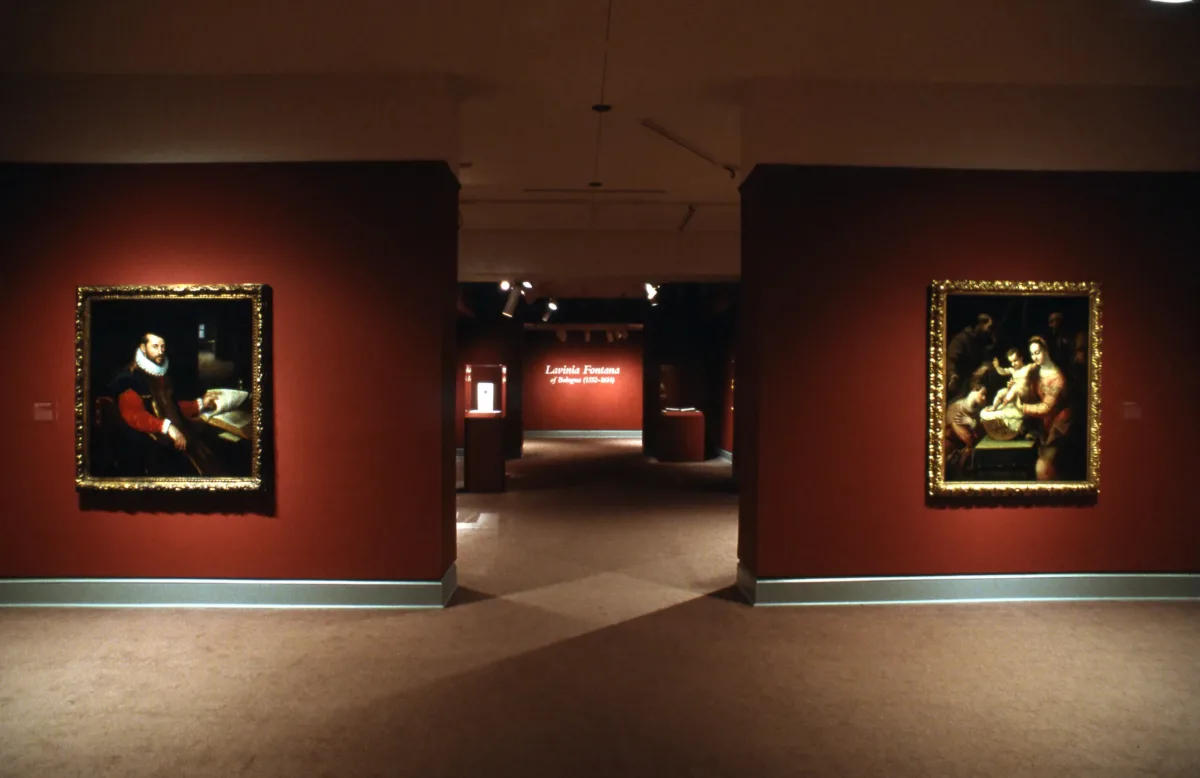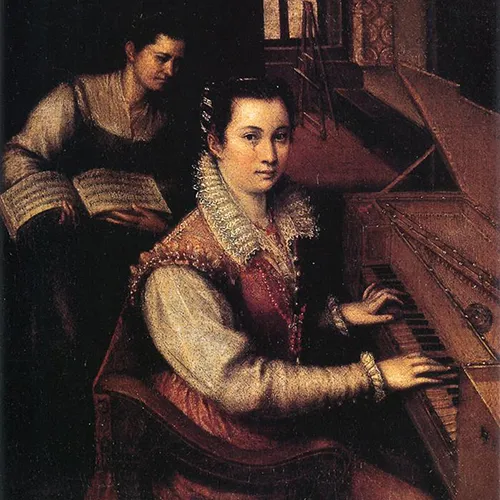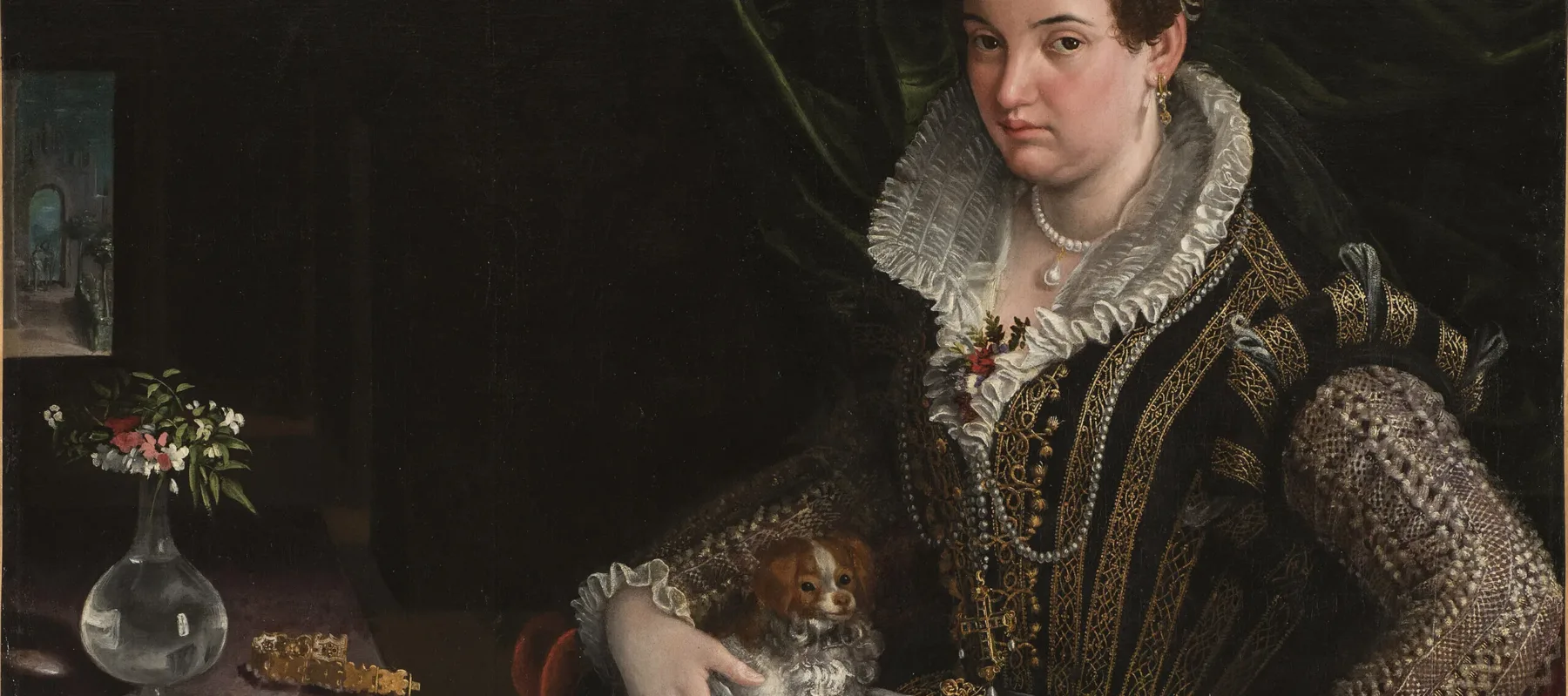Lavinia Fontana of Bologna (1552-1614) showcases the work of the first Italian woman to achieve financial and critical success as an artist. Twenty-five of Fontana’s finest paintings, engravings, and drawings from important collections in Italy and France are on view at NMWA from February 5 through June 7, 1998. Most of these works have never been seen in this country. Fontana, awarded the prestigious position of the painter to two Popes, executed large-scale religious and mythological works as well as the portraiture and still life usually undertaken by women artists of her era.
Bologna, a city known for its great humanist university, offered an auspicious environment for women artists. Fontana’s father, Prospero Fontana, was one of the city’s leading painters at the time of his daughter’s birth, and with his help, she established a reputation as a skilled portraitist. As early as 1579, the famous Dominican scholar Ciaconio commissioned Fontana to paint a self-portrait (Galleria degli Uffizi, Florence). In this painting, Fontana portrays herself both as an elegant woman adorned with lace and jewels and as an academically trained artist inside her studio preparing to draw archeological fragments arranged on the table and shelves.
Fontana’s fame was such that she alone could support her family through her work. In 1577 she married one of her father’s students, Gian Paolo Zappi, who gave up his artistià career to assist his wife in her studio, handle the accounts of her many commissions, and help care for their children. This unusual marital arrangement was necessitated by the extraordinary number of commissions Fontana received. Fontana produced more than portraits and genre paintings; she also executed small- and large-scale biblical works with many figures, including male and female nudes.
Three years before Fontana’s death in 1614, Felice Antonio Casoni designed a bronze medal in the artist’s honor. The obverse shows a profile of Fontana with an inscription identifying the artist. The reverse shows the artist as the personification of Painting seated before her easel. Hair wild and holding a paintbrush, Fontana is vividly shown as a woman dedicated to her art, a devotion fully captured in the accompanying inscription “Per Te Stato Gioioso Mi Mantene,” translated as “because of you I am in a constant fervor.”

Installation view of Lavinia Fontana of Bologna
The Artist,
Lavinia Fontana
Renaissance painter Lavinia Fontana was commissioned to make not only portraits, the typical subject matter for women painters, but also religious and mythological themes, which sometim
